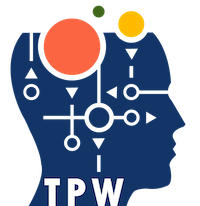Job Satisfaction refers to the level of contentedness people feel with regards to their job. It is an umbrella term that includes aspects like self-motivation, job security, and comfortable work-life balance, amongst others. Job satisfaction is not just a desirable quality for employees, but for organizations as well. For an employer, an employee’s work satisfaction is a critical factor in getting the most out of them. A happy employee will often contribute more to the business, reducing turnover and assisting the company’s growth. To retain workers, employers must ensure that job descriptions are clear and that employees are given opportunities to learn and develop on a regular basis. Attention paid to the job satisfaction of employees may prevent staff shortages in the future and may even cut costs (Saane, 2003)

The benefits of job satisfaction point to the necessity of measuring it as well, and there are a number of reasons why more and more companies are taking up initiatives to do so. For example, a company might track employee job satisfaction over time to see if there are any changes in employee attitudes or reactions to a new policy or organizational change. Job satisfaction surveys can also serve as a diagnostic tool, revealing which aspects of the job are causing workers dissatisfaction. Finally, businesses can use job satisfaction as a predictor of other important attitudes or behaviors (e.g., job turnover). In any case, a useful metric is important.

How, then, is job satisfaction measured?
There are a number of quantitative as well as qualitative methods to measure job satisfaction. Quantitative measures are more commonly used and are based on numerical ratings assigned to closed-ended response items. There are many psychometric measures that have been developed to assess job satisfaction. Saane (2003) did a systematic review of the instruments available for measuring this attribute and assessed their validity and reliability. He found many widely used measures, such as the Job Descriptive Index, did not meet the quality criteria. He concluded that although there are several different job satisfaction instruments available, only a few of them meet several requirements for high reliability and construct validity. Amongst them, the Measure of Job Satisfaction (MJS) included most of the work factors that were considered necessary for good content validity.

Qualitative measures of job satisfaction include structured interviews, content coding of open-ended answer items, and other qualitative work satisfaction metrics. These provide a more nuanced analysis of quantitative results and often give a more detailed data of employee-experience. However, one aspect in which these qualitative measures fall short of quantitative ones is that they do not allow for comparisons between groups of workers or organisations. Nonetheless, such measures are useful for organizations to gain an insight into the experience and satisfaction level of their employees and use the data to improve on aspects of the work that employees are not satisfied with.

Given the benefits of measuring job satisfaction, it should become an integral part of organizations to carry out such assessments on a fairly regular basis, such as every six months. This not only increases the integrity of the organizations, but also helps them understand their employees better and work in ways that result in productivity from all. The study by Saan (2003) mentioned above also pointed to the necessity of developing better tests for job satisfaction, those with high reliability and validity. The development of a successful measure necessitates a considerable amount of experience and energy, and it can only be done by people with deep backgrounds in psychometrics and statistics. The standard practice of writing a few things and believing they provide a measure of job satisfaction is ineffective, and homegrown interventions without evidence of quality can lead to incorrect interpretations and conclusions. Hence, it is important for organizational psychologists working with psychometrics to look into the gap that exists in this domain and aim to fill it in by developing better measures of job satisfaction.
References
Saane, N. V. (2003). Reliability and validity of instruments measuring job satisfaction–a systematic review. Occupational Medicine, 53(3), 191–200. doi:10.1093/occmed/kqg038
About the author

Payal Somani
Payal is an undergraduate student, pursuing a major in Psychology. While her aspiration lies in clinical psychology, she is keen on learning about all fields in the domain of mental health. She thrives on books, music, and traveling, and dreams of making it big someday.

